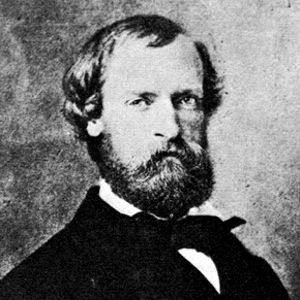

RAdm. Alexander C. Rhind.
He served off Mexico with the Home Squadron and, early in the Civil War, with both the South and North Atlantic Blockading Squadrons. On 14 December 1961, he assumed commanded the screw gunboat Crusader and earned the Thanks of Congress for the capture and destruction of Confederate works on South Carolina’s South Edisto, Dawho and Ponpon Rivers in April 1862.
The following March, he placed the new monitor Keokuk in commission but lost his ship on 8 April 1863 after engaging the defenses of Charleston, when she was sustained 90 hits and was holed 19 times near or below her waterline.
On 23 October 1863, after commanding Paul Jones and Wabash, Rhind assumed command of Agawam in the North Atlantic Blockading Squadron. For their performance during an engagement on 13 August 1864 with three batteries at Deep Bottom, a bend in Virginia’s narrow James River, RAdm. Samuel P. Lee praised him and his crew “gallantry and endurance.”
For the operation against Wilmington, North Carolina in December 1864, Commander Rhind was detailed to command the powder boat Louisiana, which was towed by Wilderness to a point 250 yards off Fort Fisher. There, he and his crew set the fuzes and started a fire before escaping to Wilderness. While the resulting explosion did little damage, Rhind returned two days later to set a navigation buoy for the close-range bombardment that followed. For these feats, Admiral Porter commended him and recommended him for promotion.
After the war, Rhind commanded the receiving ship Vermont at New York City and served as Commandant of the New York Navy Yard. Thereafter he commanded Congress and was promoted to commodore.
From 1880–1882, he served as President of the Board of Inspection and Survey. After a tour as Governor of the Naval Asylum in 1883, he was promoted to rear admiral. He retired on 31 October.
Rear Admiral Rhind died at New York City on 8 November 1897. He is buried at the Colden Family Cemetery, Montgomery, New York.